Review: Zvezda 1/48 La-5
The Lavochkin La-5 was developed from the earlier LaGG-1 and LaGG-3 fighters, which had suffered from too-heavy airframes and lack of a suitably-powerful engine. They were among the least popular fighters used by the V-VS during the Great Patriotic War and were known by a play on the aircraft designation which translated as “varnished guaranteed coffin,” which said everything one wanted to know about the deficiencies.
By late 1941, Stalin was commenting negatively on the LaGG-3 and the factories previously committed to the production of the LaGG-3 were turned over to Yakovlev for the production of the Yak-1 and Yak-7 fighters, which were notably superior designs. Motivated by fear of being imprisoned for sabotage by the NKVD for the failure of the LaGG-3, two of the designers - Semyon Lavochkin and Vladimir Gorbunov - decided to make a radical attempt at giving the fighter sufficient power, experimentally fitting a LaGG-3 with the Shvetsov ASh-82 radial engine. The design work required to adapt the LaGG-3 to the new engine and still maintain the aircraft's balance was undertaken by Lavochkin in a small hut beside an airfield over the winter of 1941-1942, all completely unofficially. Ultimately, Lavochkin accomplished his goal by grafting the nose section of a Sukhoi Su-2 to the narrow fuselage of the LaGG-3.
When the prototype took flight in March, 1942, the results were gratifying. The fighter finally had a powerplant powerful enough to perform well in the air. The LaG-5 - the designation change noting that one of the original designers was no longer involved - was declared superior to the Yak-7, by the initial test pilots. Intensive flight tests began in April, and while the design was still inferior to German fighters at altitudes over 15,000 feet, it was faster than both the Bf-109 and the Fw-190 at altitudes below 15,000 feet and was more maneuverable than either German fighter at low altitude; given that nearly all air combat on the Eastern Front took place at altitudes under 15,000 ft, the new design was very much in its element. With the additional power of the new engine, armament was upgraded to two 20mm Berezin B-20 cannon, making it the most heavily-armed Soviet fighter. With the test results so good, Stalin ordered maximum-rate production in July, 1942. Known as the La-5 after the departure of Gorbunov, production also included conversion of incomplete LaGG-3 airframes to the new design. configuration. The La-5 entered combat against the Luftwaffe over Stalingrad in the fall of 1942 and its combat performance more than lived up to test expectations.
It is a little-known bit of history that several Spanish Republican pilots, veterans of combat in the Spanish Civil War, made significant contributions in combat over the Eastern Front. The second-ranked Spanish ace of the Great Patriotic War was Francisco Meroño Pellicer, who scored 20 victories between the fall of 1942 and the end of the war, atop 20 victories scored against the Spanish Nationalists, the Italians and the Germans during the Spanish Civil War.
Born in Seville, Spain on June 17, 1917, Meroño finished his degree at the Topographic Institute in Seville just before the outbreak of war in 1936. He fought as an infantryman in the Republican Army from the first day of the Civil War, and joined the Communist Party. In late 1936, he was one of 100 Spaniards selected to be sent to the Soviet Union for flight training. Meroño completed his training at the School of Aviation in the USSR in November 1937 and returned to Spain that December. In January 1938, he was flying I-16s with the 1st Escuadrilla de Moscas.
By July, 1938, Meroño was credited with 7 victories. That month, he was promoted Jefe de Escuadrilla (squadron commander) of the 6th Escuadrilla de Moscas, which he led during the Battle of the Ebro that summer and fall, and through the struggle in Catalonia through the remainder of the war.
On October 3, 1938, Meroño led the 6th Escuadrilla into combat with Fiat C.R.32s flown by the Spanish Nationalist Patrulla Azul. Both Gabriel García Morato and Julio Salvador Díaz-Benjumea - respectively the first and second-ranked Spanish Nationalist aces of the Civil War - were in the Patrulla Azul formation. In the fight, Julio Salvador shot down two enemy aircraft and was then in turn shot down by Francisco Meroño and taken prisoner by the Republican Army.
By the end of the civil war in March 1939, Meroño was credited with 20 victories. With other Spanish Republicans, he made his way to France, where he was arrested and interned in a prison camp. With several others, Meroño managed to escape that summer before they were returned to the tender mercies of Franco's fascist regime, and they made their way to the Soviet Union shortly after the outbreak of war in September 1939. At first, Meroño and the others were not well-received by their former allies, though they were allowed to settle in the Soviet Union. Meroño took work in an auto factory in Moscow.
When the Germans attacked the Soviet Union on June 22, 1941, Meroño and other Spanish Republican pilots contacted their old flying comrades from the V-VS who had survived Stalin's purges, to volunteer to fight. Here were experienced combat pilots who knew how to fight the Luftwaffe. Given the situation, the usual Russian xenophobia gave way and they were enlisted in the V-VS.
Meroño entered combat against the Germans in his second war in October 1941, taking part in the defense of Moscow and being credited with shooting down one He-111. In the spring of 1942, he was trained on the new Yak-1. By October 1942, he was involved in combat over Stalingrad, where he scored three additional victories by the time of the German surrender in January 1943. Assigned to the 190th IAP in the spring of 1943, Meroño began flying the new La-5 fighter. He took part in the Battle of Kursk that summer, where he shot down several more Luftwaffe fighters. By the end of the war, Francisco Meroño was credited with 20 victories in the Great Patriotic War, the second-ranking Spaniard of the conflict.
Interestingly, in October 1942, Meroño may have entered combat a second time against Julio Salvador Díaz-Benjumea. Following his release at the end of the Civil War, Julio Salvador rejoined the 22nd Fighter Regiment at Tablada, and - as the top-scoring surviving Spanish Nationalist fighter pilot of the war - was named head of the Fighter School. Following the Nazi invasion of the Soviet Union, Franco sent Spanish “volunteers” to fight with the Germans. The new “Patrulla Azul” became 15.(Span)/JG 51, entering combat on the Central Front in the spring of 1942. In March 1942, Julio Salvador relieved Julio Salas as squadron commander, leading the unit until November 1942 when the Spanish expeditionary force was withdrawn from the Soviet Union after suffering appalling losses during the fighting in Stalingrad. Salvador engaged in combat in the Stalingrad region that fall, and on October 3, 1942, was involved in combat with a squadron of Yaks supported by LaGG-3s, of which he shot down one. No one can say for certain who was in the V-VS formation, but the possibility exists the two old enemies had tangled in the new war.
Following the end of the war, Meroño remained in the Soviet Union as an officer in the V-VS until 1948, when he joined Aeroflot. Returning to the V-VS in 1963, he served from 1964-69 as an advisor to the Cuban Air Force. In 1970 he retired due to medical conditions and remained in the USSR.
In 1985, the Spanish government made Meroño a Colonel in the Ejercito del Aire (an event that must have given Julio Salvador a fit of indigestion, given that at the time he was a senior general of the Spanish Air Force) in recognition of his service to the Republic.
Colonel Francisco Meroño died in Moscow on July 17, 1995. He is the author of “In The Sky of Spain,” a memoir of the Spanish Civil War and “Spanish Aviators in the Great Patriotic War,” a history of the Spanish Republican pilots who flew with the V-VS.
The kit
There have been very few kits ever done of the early La-5. Most recently, Sergey Korshakov of Vector did one in resin that was very well-received. One can get an indication of the quality of this latest release from Zvezda by the fact Sergey told me that the Zvezda kit was better than his now out of production resin kit.
The kit is highly detailed with a very complete interior. As with many plastic kits that have a complete interior, the best way to build the model if you want to display all that detail is to open it up. It's not Tami-gawa production quality, but it is far from a “limited run” kit either. While one does need to clean up flash here and there, the good news is that all the parts fit right and assembly can be done with a minimum of hassle. Decals are provided for one aircraft. These aren't great but “they'll do” if you do not have access to aftermarket decals. The only aftermarket sheet I know of that ever did an La-5 was Aeromaster's early 48-086, “Fighting Lavochkins I,” which is long out of production. There was a “Part II” to that series, which I believe may have done another La-5, but I am not certain of that.
At the outset of assembly, the modeler has to ask themselves what the ultimate result will be. If all the parts are going to be used, then one has to do it opened up. If you decide to do it “buttoned up” then all those nice detail parts should be put aside.
I did find in assembly that using the fuselage interior pieces in the rear fuselage did a great job of insuring accurate final assembly. I did cut off the engine mounts and only used the very front of the engine in the assembly, since you cannot see much - if any - of it once you have the spinner and fan in position.
I painted the interior a greenish shade that was a mixture of Xtracrylix RLM63 Grey-Green and RLM62 Green suggested to my by Bill Bosworth as being close to the color he had found when he examined the Il-2 that Accurate Miniatures researched for their kit.
Eduard makes a very nice photo-etch set for the La-5FN kit that is also useful for the La-5 kit, and I made use of the photo-etch instrument panels and the seat belts. I found photos of a whole group of La-5s with their elevators cocked up from having the lap belt wrapped around the control stick, and decided to do the same with this model.All the control surfaces - ailerons, slats, elevators and rudder - are separate. These fit very nicely but if you are going to pose them in other than the neutral position you will have to sand them a bit to modify the shape correctly at the hinge lines. The La-5 originally had automatic slats, which would have been “down” while sitting on the ground. However, by 1943 it had been discovered that the airplane had better maneuverability with the slats wired shut (the later La-5F and La-5FN came from the factory with the slats permanently closed), so I attached those in the closed position.
I used Gunze-Sangyo FS34102 Green for the upper camouflage color, with Tamiya “NATO Black.” The decal sheet I was using said to paint the entire upper surfaces green, but research at Erik Pilawski's site “Modeling the V-VS” leads me to believe that La-5s were done in the 2-color scheme (though one can never say “never” with Soviet aircraft of the war). The lower color is a blue I mixed myself to match the colors found at Erik's site “Modeling the V-VS.” This was all done freehand using the camouflage pattern also found at Erik's site.
Being the owner of Aeromaster 48-086, I decided to use the decals for the La-5 flown by Francisco Meroño. Not knowing a thing about him, I Googled his name and came up with the very interesting unknown history told above (thank goodness for the Google translation capability, since it was all in Spanish). The decals went down as nicely as Aeromaster decals are known to.
I really like the Lavochkin La-5 series; they are in fact my favorite Soviet fighters of the Great Patriotic War. This kit is easy to assemble and presents no problems the average modeler cannot deal with. The result is a really nice-looking addition to any collection of famous aircraft of the Second World War.
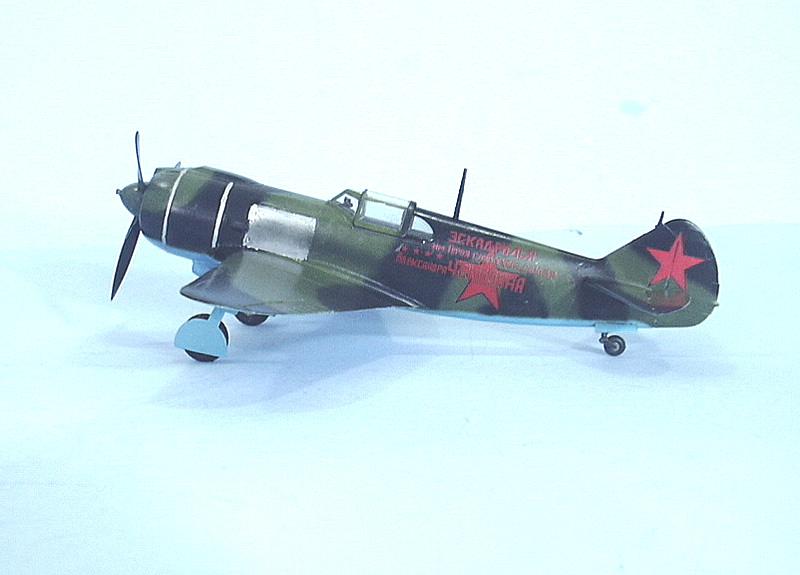

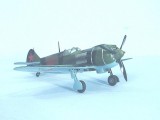
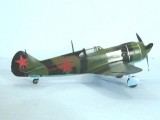
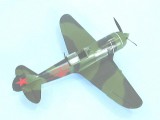
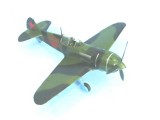
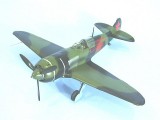
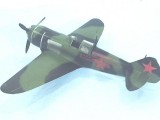
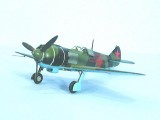
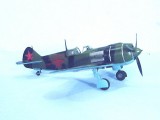
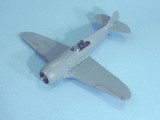
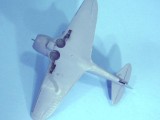
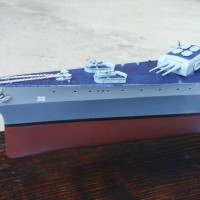
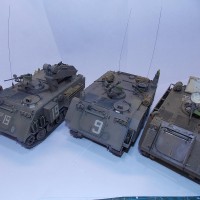
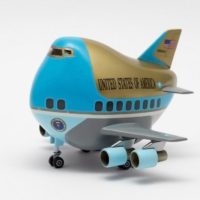
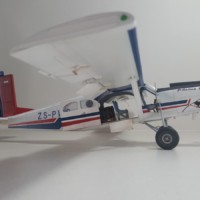
Awrsome. Love the history behind every one of your builds.
Great story and a great model ! Time to start my La-5 FN
Tom,
Another great model and story. I enjoy reading your work.
Another nice model of an aircraft not often seen along with a really interesting back story.